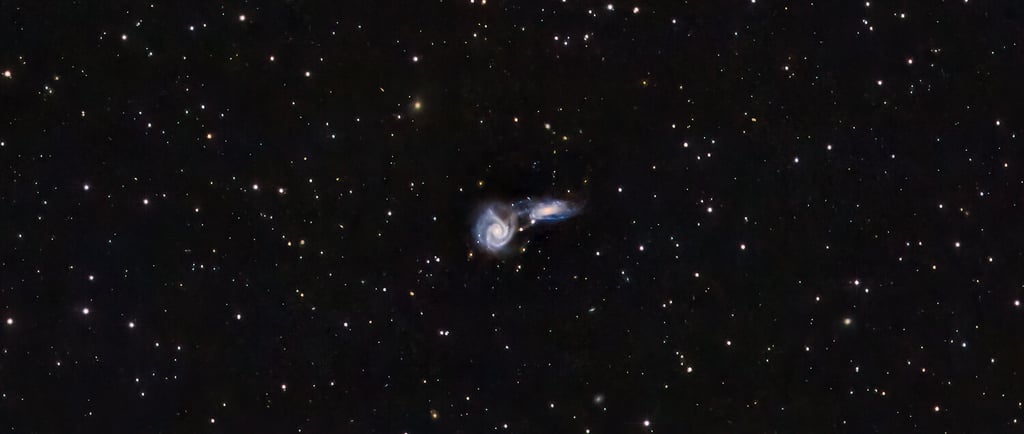NGC 5426 and NGC 5427: A Closer Look at ARP 271


Introduction to NGC 5426 and NGC 5427
In the vast expanse of the universe lies a captivating duo of spiral galaxies known as NGC 5426 and NGC 5427. These two interactive celestial giants form a pair that is not only fascinating for astronomers but also intriguing for anyone with a keen interest in the cosmos. Positioned approximately 120 million light-years away from Earth, NGC 5426 and NGC 5427 represent a compelling case study of galactic interactions within the ARP 271 grouping.
The Characteristics of NGC 5426 and NGC 5427
Both galaxies exhibit similar sizes and structures, categorized distinctly as spiral galaxies. Their interaction leads to unique morphological features; for instance, the gravitational forces between them can result in tidal tails and distortions across their spirals. NGC 5426, with its bright nucleus and well-defined spiral arms, complements its partner, NGC 5427, which displays a more elongated shape due to their gravitational interactions. Such characteristics tend to change over astronomical timescales, making studies on these galaxies essential for understanding the evolutionary paths of spiral galaxies in the universe.
Significance of the ARP 271 System
ARP 271, comprised mainly of NGC 5426 and NGC 5427, offers essential insights into the nature and dynamics of interacting galaxies. The interactions between these galaxies make them ideal subjects for research on star formation rates, chemical enrichment, and the behavior of dark matter within galactic systems. Investigating the properties of NGC 5426 and NGC 5427 can provide significant clues about how galaxies evolve through gravitational interactions and the resulting stellar processes.
Moreover, ARP 271 stands out not just in its galactic interactions but also in its contributions to our understanding of cosmic structures in the overall layout of the universe. By studying similar galactic pairs and their interactions, astronomers can better comprehend the lifecycle of galaxies, revealing crucial information about both the past and future of astronomical evolution.
In conclusion, the interaction between NGC 5426 and NGC 5427 not only enriches our knowledge of galactic dynamics but also brings to the forefront the complexities of cosmic relationships. As we continue exploring the mysteries of ARP 271 and its constituent galaxies, we unlock more secrets of the universe, further bridging the knowledge gap in astronomical sciences.
